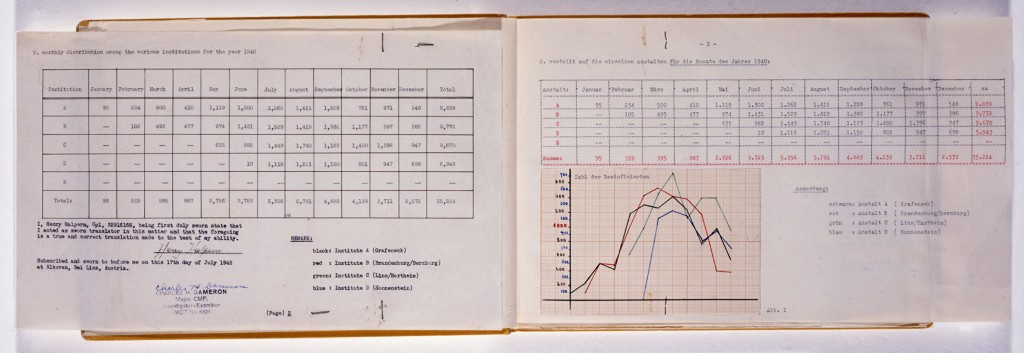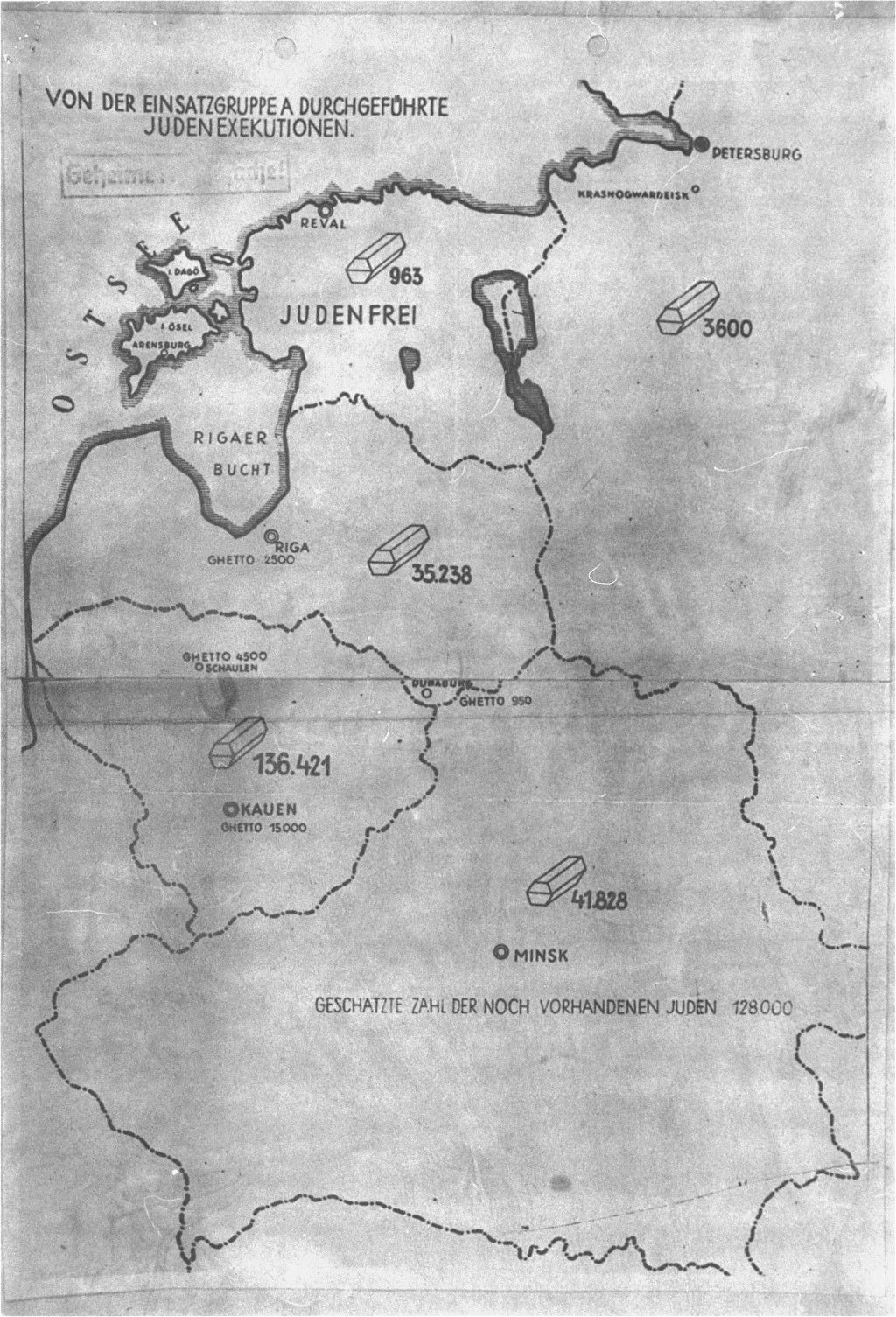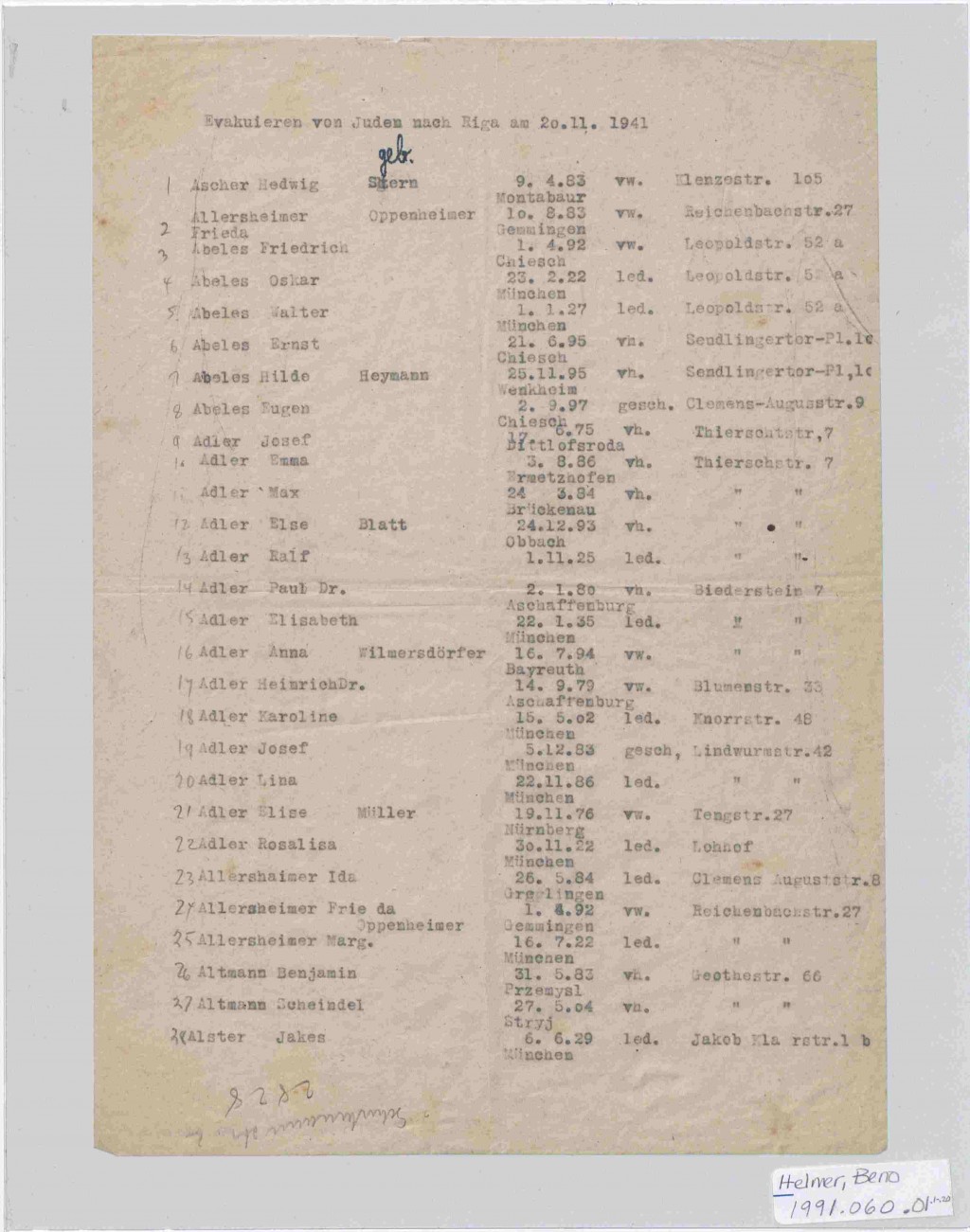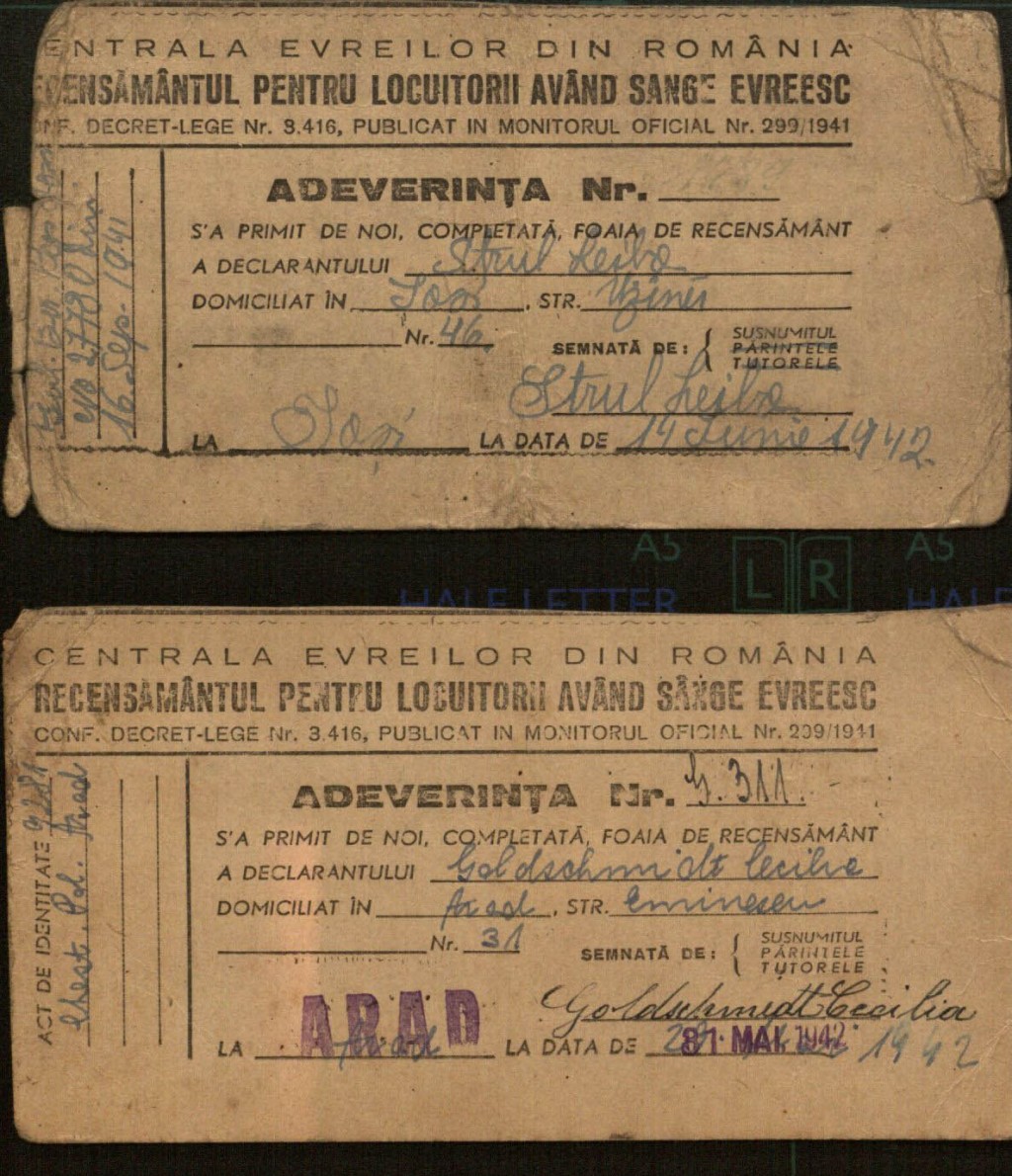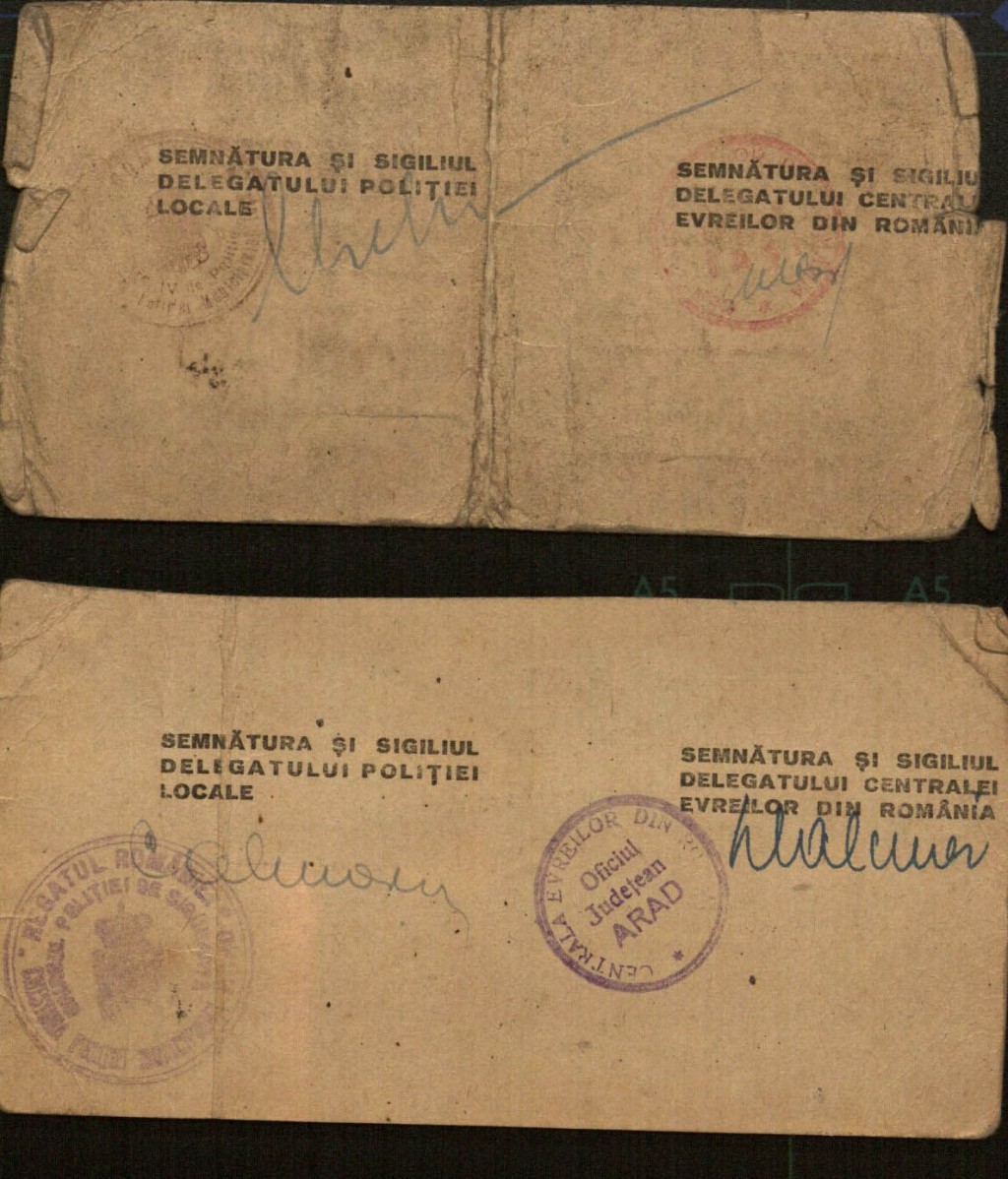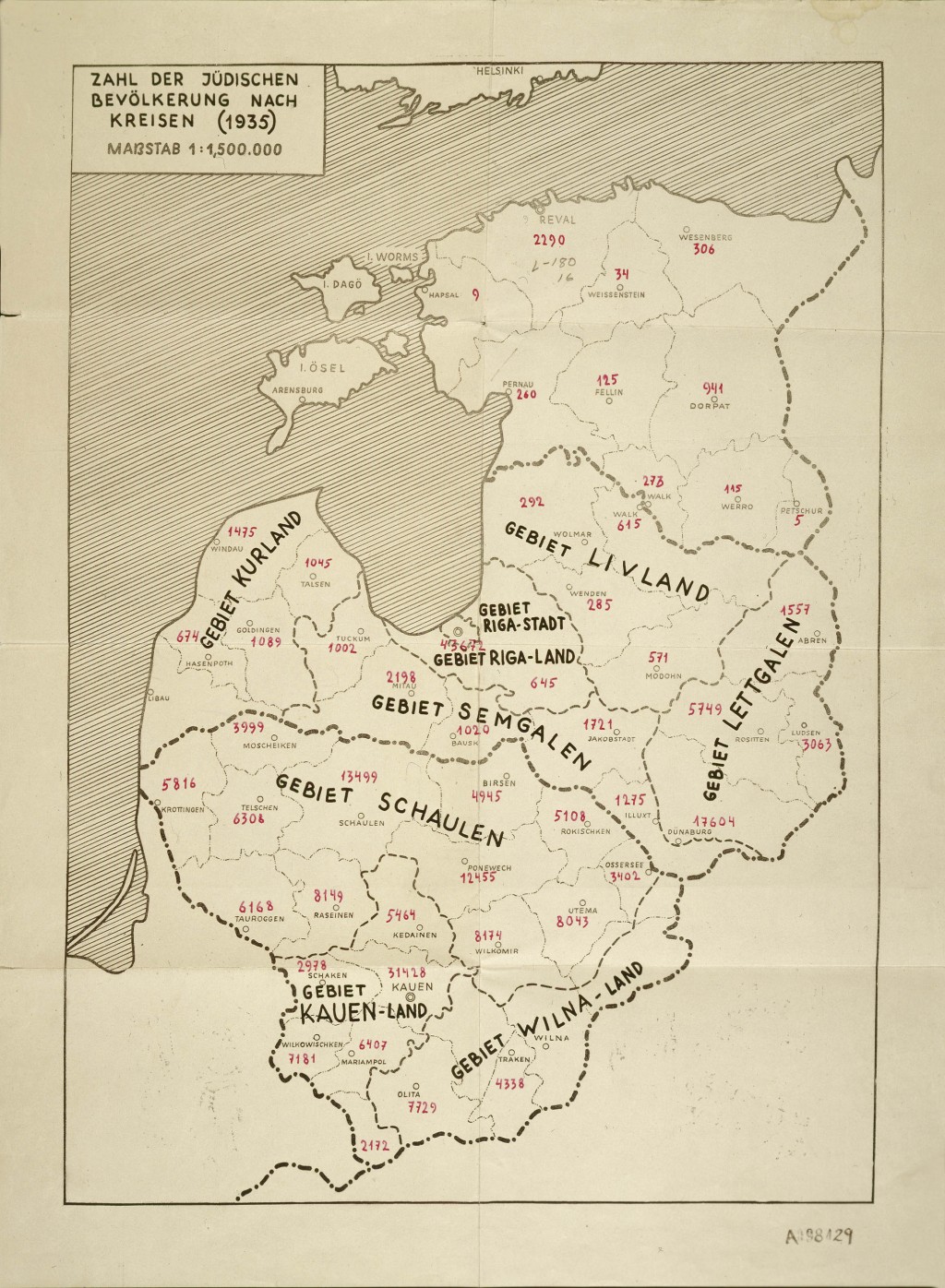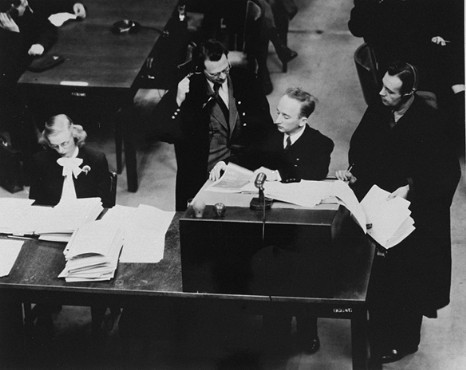
How Many People did the Nazis Murder?
Nazi Germany committed mass murder on an unprecedented scale. The Nazis and their allies and collaborators killed six million Jewish people. This systematic, state-sponsored genocide is now known as the Holocaust. The Nazis and their allies and collaborators also committed other mass atrocities. They persecuted and killed millions of non-Jewish people during World War II.
Key Facts
-
1
Six million Jewish people died in the Holocaust.
-
2
The Nazi German regime systematically murdered Jewish people in gas chambers; mass shooting operations; and through deliberate privation, disease, and brutal treatment.
-
3
The Nazis also targeted other groups for persecution and mass murder. These groups included Soviet POWs, ethnic Poles, Roma, and people with disabilities, among others.
Nazi Germany committed mass murder on an unprecedented scale. Before and especially during World War II, the Nazi German regime perpetrated the Holocaust and other mass atrocities. In the aftermath of these crimes, calculating the number of victims became important for legal, historical, ethical, and educational reasons.
The statistics below were calculated using a number of different sources. These sources include surviving Nazi German reports and records; prewar and postwar demographic studies; records created by Jews during and after the war; documentation created by resistance groups and underground activists; as well as other available, extant archival sources.
These death statistics lay bare the enormity of the Holocaust and other Nazi crimes. They are a starting point for confronting the scale of human loss unleashed by Nazi Germany.
How many Jewish people died in the Holocaust?
In total, six million Jewish men, women, and children were murdered by the Nazi German regime and its allies and collaborators. This genocide is now known as the Holocaust. Antisemitism was at the foundation of the Holocaust. Antisemitism, the hatred of or prejudice against Jews, was a basic tenet of Nazi ideology. This prejudice was also widespread throughout Europe.
During the Holocaust, the Nazis and their allies and collaborators murdered Jews in many places using several methods. The two main methods of murder were poison gas and mass shootings. They also murdered Jews in other acts of violence and by deliberately denying them access to adequate food, shelter, medical care, and other necessities.
The below statistics list the number of Jewish people killed in killing centers (sometimes called death camps or extermination camps); in mass shooting operations and associated massacres; as prisoners in camps and ghettos; and outside of sites of detention in other acts of violence.
Table 1. Breakdown and explanation of how six million Jewish people were murdered in the Holocaust
| Number of Jews murdered (by site and method) | Explanation |
|---|---|
| Approximately 2.7 million Jews were murdered at killing centers. | The Nazi German regime created five killing centers specifically to murder Jewish people using poison gas. These killing centers were called Chełmno, Belzec, Sobibor, Treblinka, and Auschwitz-Birkenau. See table 2 for a breakdown of this number by killing center. |
| About 2 million Jews were murdered in mass shooting operations and related massacres. | The Germans and their allies and collaborators carried out mass shooting operations and related massacres of Jews in more than 1,500 cities, towns, and villages across occupied eastern Europe. |
| Between 800,000 and 1,000,000 Jews were murdered in ghettos, labor camps, and concentration camps. | In ghettos, concentration camps, and labor camps created by the Germans and their allies and collaborators, Jews were murdered through deliberate privation, disease, brutal treatment, and arbitrary acts of violence. |
| At least 250,000 Jews were murdered in other acts of violence outside of camps and ghettos. | The Germans and their allies and collaborators killed Jewish people in acts of violence and deprivation that took place outside of sites of detention (camps and ghettos). This includes Jews murdered in antisemitic riots; in individual executions; as partisans; and en route to and between sites of detention (on forced marches, trains, and ships). |
There is no single Nazi German document that accounts for every death in the Holocaust. Rather, there are hundreds of thousands of pages of Nazi German documents that recorded this information. One of the best documented aspects of the Holocaust by the perpetrators are transports to and gassing operations at killing centers. Thus, we know with some specificity and precision the death toll for each of the five killing centers of the Holocaust.
Table 2 shows the breakdown of the 2.7 million Jewish victims murdered at the five killing centers.
Table 2. Number of Jewish victims murdered by the Nazis at killing centers
| Killing center | Number of Jewish victims |
|---|---|
| Chełmno | at least 167,000 |
| Belzec | approximately 435,000 |
| Sobibor | at least 167,000 |
| Treblinka II | approximately 925,000 |
| Auschwitz camp complex (including those gassed upon arrival at the Auschwitz-Birkenau killing center and those who were killed in the camp complex through other means) | approximately 1,000,000 |
| Subtotal | approximately 2.7 million Jewish people were murdered at killing centers |
In total, six million Jews died in the Holocaust. This number is calculated based on Nazi German documents and prewar and postwar demographic data.
How many non-Jewish people did the Nazis and their allies murder between 1933 and 1945?
The Nazis and their allies and collaborators murdered six million Jewish people in a genocide now known as the Holocaust. They also murdered millions of non-Jewish people between 1933 and 1945.
Table 3 lists the estimated number of non-Jewish people murdered by the Nazi German regime and its allies and collaborators for biological, racial, political, and/or ideological reasons.
Table 3. Number of non-Jewish people murdered by Nazi Germany and its allies and collaborators (by group)
| Non-Jewish groups persecuted by the Nazi German regime and its allies and collaborators | Number of non-Jewish victims |
|---|---|
| Soviet prisoners of war | around 3.3 million |
| Non-Jewish (ethnic) Poles | around 1.8 million |
| Romani men, women, and children and other people derogatorily labeled as "Gypsies" | at least 250,000, but possibly as high as 500,000 |
| Serb civilians murdered by Ustaša authorities of the Independent State of Croatia | more than 310,000 |
| People with disabilities living in institutions and care facilities | 250,000–300,000, including at least 10,000 children |
| German political opponents and dissenters | tens of thousands |
| Germans imprisoned in concentration camps as "professional criminals" and "asocials" | about 35,000 |
| Jehovah's Witnesses killed in concentration camps or executed for refusing to serve in the German military | about 1,700 |
| Gay men, bisexual men, and other men accused of homosexuality | Hundreds, possibly thousands |
| Black people in Germany | Unknown, perhaps hundreds |
During World War II, the Germans and their allies brought devastation to the continent, and themselves. In addition to those listed above, millions of others lost their lives as a result of World War II in Europe. The Germans and their allies killed innocent civilians in massacres that the perpetrators termed reprisal actions and anti-partisan pacification measures.
Furthermore, millions more Europeans, as well as Americans and others, were wounded or killed in the fight against Nazi tyranny. They lost their lives as soldiers in the Allied armies, and as members of partisan groups and resistance organizations. The war also cost the lives of millions of German and Axis soldiers and civilians.
Documenting Nazi Crimes
As it became clear that they were losing the war, the Nazis attempted to destroy evidence of their atrocities. They exhumed mass graves and burned corpses. They also attempted to burn and otherwise destroy the hundreds of thousands of pieces of paper on which they had documented their crimes.
But, Nazi mass murder was so extensive and destructive that it was impossible to completely cover up the crimes and destroy the evidence. It was obvious that millions of people were dead and that entire communities were missing. Despite the Nazis’ efforts, both documents and witnesses survived. Combined, they provided irrefutable proof of the Holocaust and other mass atrocities. Witness accounts and testimonies and Nazi German documents served as evidence in postwar trials. They also became the foundation of the historical record.
Nazi Germany’s extensive paper trail formed the basis of the case against Nazi leaders and organizations at the International Military Tribunal at Nuremberg. In other postwar trials, Nazi German documents helped prove that individuals had perpetrated specific crimes. Witness testimonies in postwar trials also helped convict perpetrators.
Survivors documented their experiences in memoirs, diaries, and written and oral testimonies. In some cases, written testimonies survived but their authors did not. Survivors spearheaded the creation of archives, memorials, and museums, among them the United States Holocaust Memorial Museum.
Memorializing the Victims
The United States Holocaust Memorial Museum documents the stories and fates of the six million Jewish individuals murdered in the Holocaust, as well as the experiences of millions of other people murdered by Nazi Germany and its allies and collaborators.
For those victims whose names and stories remain unknown, accurately calculating the number of victims of the Holocaust and other Nazi crimes is an integral part of memorializing their personhood.
Footnotes
Critical Thinking Questions
Why is it challenging to calculate exactly the number of victims of the Holocaust?
Why is it important to document the events of the Holocaust?
Research the roles and complicity of professionals such as record keepers, photographers, and accountants who created documentation of mass murder or witnessed it.


